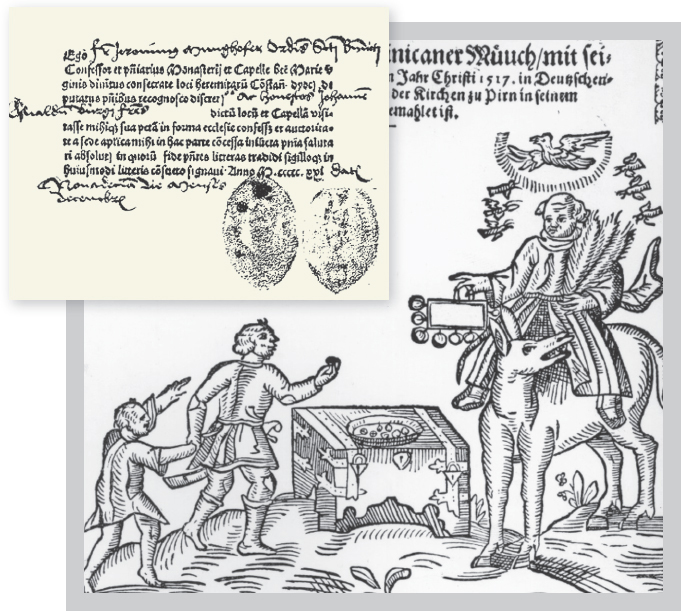Understanding World Societies:
Printed Page 436
> What were the central ideas of Protestant reformers, and why were they appealing to various groups across Europe?

Selling Indulgences
A German single-page pamphlet shows a monk offering an indulgence, with the official seals of the pope attached, as people run to put their money in the box in exchange for his promise of heavenly bliss, symbolized by the dove above his head. Indulgences were sold widely in Germany, and they were the first Catholic practice that Luther criticized openly. This pamphlet also attacks the sale of indulgences, calling it devilish and deceitful, a point of view expressed in the woodcut by the peddler’s riding on a donkey, an animal that had long been used as a symbol of ignorance. Indulgences were often printed as fill-in-the-blank forms. This one, purchased in 1521, has space for the indulgence seller’s name at the top, the buyer’s name in the middle, and the date at the bottom . (woodcut: akg-images; indulgence: Visual Connection Archive)
A German single-
CCALLS FOR REFORM IN THE CHURCH came from many quarters in early-